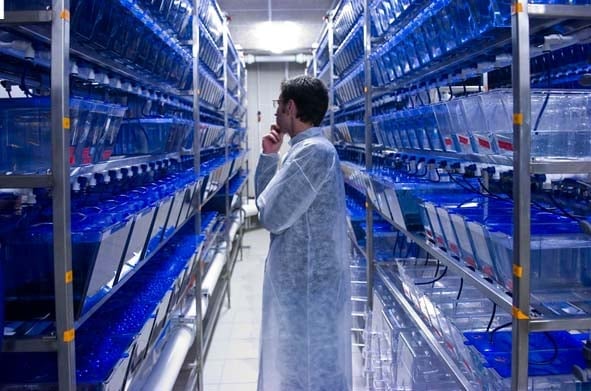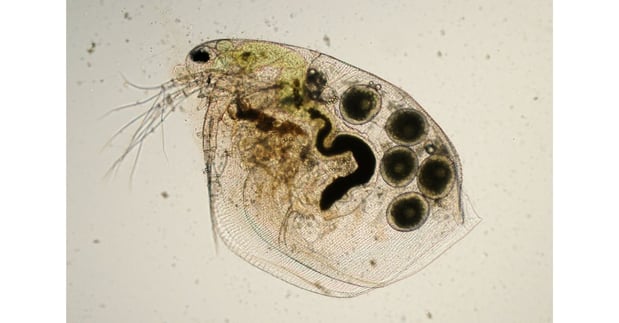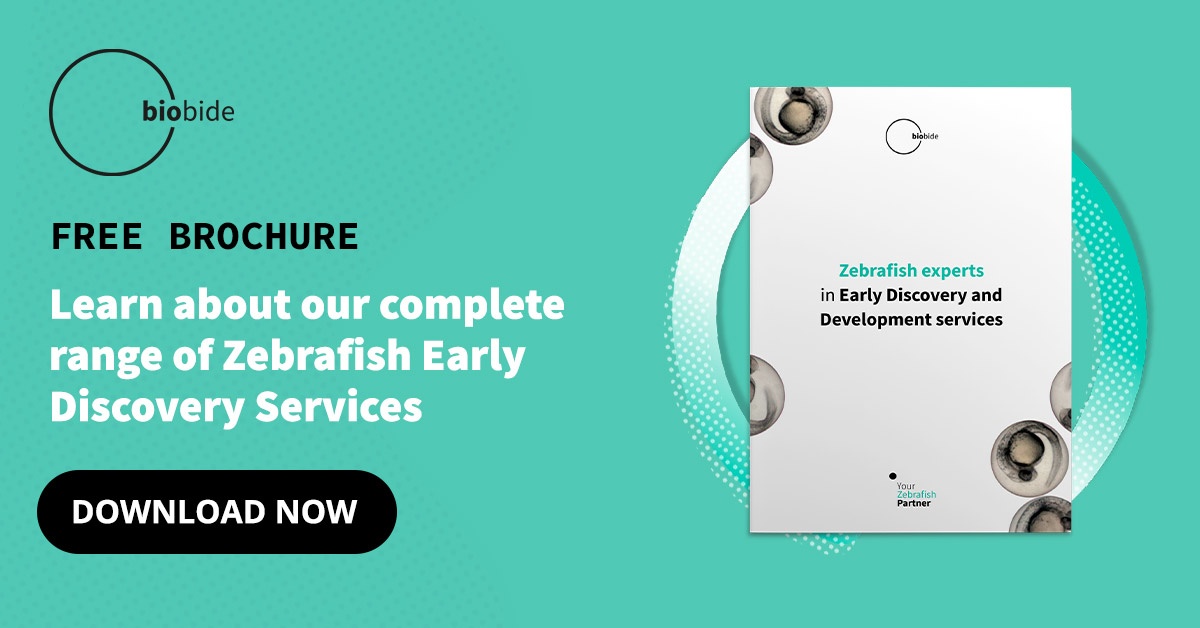The 3Rs Principles provide a foundation for ethical and more humane animal research. They have been implemented in international legislations and regulations, and are only expected to become more commonplace as public sentiment continues to favor these practices.
In this article, we’ll deep dive into the 3Rs Principles, and explain what they are, why they’re important, alternative models that fall under the 3Rs, how the 3Rs can be used in different research applications, and the other important Rs of animal research.

Index:
The 3Rs of Animal Research: Definition
The 3Rs of animal research stand for Replace, Reduce, and Refine. These principles are considered a systematic approach to animal experimentation that puts the well-being of the animals front and center.
The main goal of the 3Rs is to alter traditional animal testing practices so that animal experimentation is reduced to a minimum whenever possible. Moreover, it attempts to lower animal distress and suffering during research to a minimum. The 3Rs are supported by many government legislations and regulatory systems.
Therefore, it is obligatory for researchers to conduct experiments using animals to comply with the 3Rs approach. We will now further explain what these 3Rs are, and how they can be upheld.
-07.jpg?width=600&name=graph(3)-07.jpg)
Replace
The first R of the 3Rs refers to the Replacement of animal models with alternative models or different technological advances to analyze the biological activity of a drug or a substance. Simply put, Replacement focuses on finding new ways to perform tests without the need for animal models.
Replacement can include two different styles:
- Full replacement, in which there is complete avoidance of animals in research. New technologies like organs on chips, computer models, and tissue and cell engineering support full replacement efforts.
- Partial replacement utilizes organisms that do not experience pain, based on current scientific understanding. These can include alternative models like Zebrafish and Daphnia.
Reduce
The second R, Reduction, seeks to minimize the number of animals used in experimentation without compromising a statistically significant outcome. Simply put, it aims to find new ways to extract the same or more information from fewer animal models.
In order to reduce animal use in experimentation, it is important that results are easily replicated and that data is able to be easily shared between organizations and researchers. Reduction also seeks to obtain the maximum amount of data possible when utilizing animal models, so that they do not have to increase the number of used models overall.
Refine
The final R, Refinement, aims to minimize the potential suffering, pain, and distress of animals during testing when animal models must be used. In other words, it is about finding new ways to ensure the well-being of animal models.
This can be accomplished by using non-invasive techniques, improving living conditions, and using new gentler approaches when handling the animals. This is not only important for the welfare of the animals, but it may also improve results for researchers, as studies have shown that the mishandling of animal models can lead to higher stress levels and compromised results.
Why Are The 3Rs Becoming Important In The Drug Discovery Process?
The 3Rs principles were initially developed in the late 1950s. Since then, they have evolved into a widely acknowledged set of guidelines accepted and upheld by many regulatory agencies, legislations, and private and public laboratories. The 3Rs are increasingly becoming more important in the Drug Discovery process because more directives are making adherence to these principles obligatory. Additionally, public opinion on animal research supports 3Rs practices.
Benefits and Impact of Applying the 3Rs of Animal Research
The 3Rs of animal research are supported by both scientific evidence, ethics, and various regulatory bodies. There are many benefits to applying the 3Rs, including minimizing animal suffering and distress, increased innovation, and saving costs of traditional animal models.
In fact, adhering to 3Rs guidelines can even impact the results of testing itself. There is evidence that the way animals are handled, housed, and treated can have a very strong effect on the physiology and immunology of an animal. Thus, this can alter the validity and accuracy of any data attained.
For example, even holding an animal aggressively can increase its blood pressure and hormones. The practice of refining animal research can actually benefit the outcomes and quality of research results.
The 3Rs also provide a unique opportunity for the rise of innovative technologies, techniques, tools, and approaches that reduce the use of animals while maintaining and improving results. Also, using animal models may increase the rate of bias and reproducibility due to small sample sizes. By using new models that are 3Rs approved, this bias can be overcome due to having more data on alternatives.
In the case of Replace, alternative models can be used to take the place of traditional animal models. This can potentially decrease costs of research by 25%. Especially when you look at alternative models like Zebrafish, which are low cost, easy to maintain, and have high relevance to human disease, the switch to alternative models is actually more beneficial to research institutions.

Regulatory Authorities That Support The Application Of The 3Rs of Animal Research
Many authorities are committed to finding new alternatives and warranting a high level of animal well-being. The EURL-ECVAM, which validates methods that reduce, refine or replace the use of animals for safety testing and efficacy/potency testing of chemicals and vaccines, was established in 2011, due to the increasing need for new methods to be developed and proposed for validation in the European Union.
Similarly, in 2019 the United States EPA announced that they will reduce mammal studies by 30% by 2025, and eliminate all mammal studies by 2035.
In the United Kingdom, the NC3Rs help researchers find new replacements for animals, reducing the number of animals used, or refine the care to keep the distress to a minimum.
The U.S. Food and Drug Administration (FDA) plays a major role in regulating animal use. In February 2020, the FDA issued a guidance draft on the nonclinical use of drugs and biologics in guinea pigs. This draft states that scientists should use in vitro, in chemico, and in silico methods instead of guinea pigs.
Many other names are worth mentioning, the CVMP (Committee for Medicinal Products for Veterinary Use), Joint 3Rs Working Group, CHMP (Committee for Medicinal Products for Human Use). These working groups are working on the application of the 3Rs in regulatory manners. Besides, they advise on all concerning matters on the use of animals in research. Furthermore, they focus on the proper use of the 3Rs of animal research.
Alternative Animal Models that Fall Under the 3Rs Guidelines
As part of the Replacement principle in the 3Rs of animal research, seeking out alternative models is essential. Fortunately, there are many different alternative models that exist and allow researchers to continue their Drug Discovery, all while lowering costs and producing worthwhile results. Let’s review two of the most beneficial alternative models, Zebrafish and Daphnia.
-1.jpg?width=600&name=graph(3)-1.jpg)
Zebrafish for Ethical Animal Research
In the last few decades, new, alternatives that are more ethical have become available, such as the Zebrafish. The skin of the adult Zebrafish starts to color from the third week; the Zebrafish embryos are in contrast, completely transparent. Thus, by using only microscopes, researchers can take a look inside the internals of animals without harming or injuring their embryos.
Zebrafish can be grown and maintained very easily, can be housed in large groups, and can produce 200-300 eggs per couple, not to mention, the embryos can hatch two days after fertilization. All of the vital organs of the fish have matured just within five days after fertilization and function independently. In just two to three months, Zebrafish reach sexual maturity which allows the quick production of new offspring. Zebrafish grow incredibly fast, are small yet strong, and have many organs and genes in common with humans.
Genetic similarity between humans and zebrafish
Zebrafish and human cells share over 70% of genes. Moreover, 84% of disease gene homologs are shared between humans and Zebrafish. This close genetic similarity makes Zebrafish an extremely beneficial alternative model for research involving human diseases. In fact, Zebrafish have a developed immunity system that is comparable to humans. The mainstream of the molecules and signaling pathways involved in the immune response is similar to humans.
Zebrafish as an In Vivo Model
An in vivo test involves testing a living organism to understand the impact of drugs and treatments on whole organisms. Perhaps one of the biggest advantages of zebrafish is that they act as a bridge between in vivo and in vitro testing. Because they are not considered animals until 5 days post fertilization, they allow researchers to conduct studies on a living organism using in vitro techniques and tools, all while respecting 3R regulations.
This means that Zebrafish act as both an in vivo model, in which they can be used to test drugs on a whole organism, and an in vitro model, which is not considered an animal by Three Rs standards.
Cost-effective solution for Drug Discovery
When comparing zebrafish to other animal models, they are often seen as a cost-effective alternative solution. Their shared genetic similarity with humans, high fertility, and rapid growth make them more cost-advantageous than other alternatives. Their housing is also much more cost-effective than most traditional animal models because they can be stored close-knit aquarium shoals in large groups. Additionally, because Zebrafish produce a high amount of eggs, new models are easily reproduced.
Daphnia: All You Need to Know
Daphnia is another alternative model that can be used to replace animal models and uphold 3Rs principles. Daphnia are small water crustaceans that live in freshwater environments, like ponds, lakes, and streams. Commonly known as water fleas, they are low-order plankton creatures with limited complexities.
Daphnia's unusual life cycle has been studied for more than 150 years, providing relatively well-understood models for physiology, toxicology, and ecology. Traditionally these crustaceans have been used to study freshwater environments and ecotoxicity, but increasingly it has also proven to be an advantageous model for Drug Discovery and biomedical research.

How Daphnia are used as an alternative animal model
Similar to Zebrafish embryos, Daphnia are transparent, which allows scientists to easily observe the animal without harm. As the first crustacean to have its genome sequenced, using genetic tools like microarrays and genetic linkage map cDNA libraries makes it a great alternative to other animal models.
Additionally, Daphnia exhibits the greatest visible model of morphological flexibility in response to specific chemical signals when tested in studies. Daphnia have been used to study toxicity assessment of pharmaceuticals and ecotoxicity due to sensitivity to toxicities and stressors.
Benefits of using Daphnia on Drug Discovery
Daphnia has an assortment of benefits for Drug Discovery, including its fully sequenced genome, cost-effectiveness, quick cultivation, and applications for various toxicity studies. Daphnia’s life cycle permits the study of epigenetic properties in perplexing genetic variances. According to a study done by the University of Life Sciences in Lublin, Daphnia “are sensitive animals to various therapeutic classes of pharmaceuticals.” The study shows that it is possible to study “sublethal effects induced by lower concentrations of pharmaceuticals which would not be possible to notice by using OECD tests.”
They are also easily cultivated in research laboratories. Due to their small size, 20 or 30 of Daphnia can be bred at once in a pitcher with adequate nourishment and ventilation. These properties permit routine use as an alternative model that can yield high results.
Applications of The 3Rs in Different Sectors
-09.jpg?width=600&name=graph(3)-09.jpg)
Cosmetics and Fragrances
The cosmetic and fragrance industries have led the charge in seeking out 3R practices. This effort was evident through the articulation of the SEURAT-1 research program in the UK. This program focused on the reduction of animal testing in the areas of eye irritation, genotoxicity, skin sensitivity, and systemic toxicity. Many new methods and alternative approaches were achieved during this program, leading to more refinement and reduction in the use of animal models overall. The UK also banned testing fragrance products and their ingredients on animals in 1998.
In the European Union, a July 2013 regulation banned the use of animal testing for cosmetic purposes. This includes a ban on testing finished cosmetic products, testing ingredients or combination of ingredients, and a ban on marketing finished cosmetic products and ingredients in the EU which were tested on animals.
In the United States, there is no current federal ban on animal testing for cosmetics and fragrances, however many institutions are already utilizing 3Rs principles in their practices. Additionally, as more states, like California, Nevada, and Illinois, ban the sale or import of animal-tested cosmetics more companies will be required to seek out 3Rs practices to make their products available.
Other countries, like Vietnam, have announced that they will stop using Draize rabbit eyes for cosmetic tests. This courageous step was taken after the full validation of many alternative methods needed to establish cosmetic safety.
Pharma, Biotech, and Chemical Research
Currently, animal models are necessary for Preclinical Studies before new drugs can move on to the Clinical Phase. However, the 3Rs can be present in the Early Drug Discovery phases, to replace and reduce the use of animal models in these stages. Alternative models, like Zebrafish, and technology like cell cultures, human-based cell models, and organs on a chip are furthering 3Rs practices in the pharmaceutical and biotechnology industries.
One of the most common examples of the 3Rs application in pharmaceutical fields is pyrogen testing. Pyrogens are substances known to induce fever in humans i.e. bacterial toxins. In the past, rabbits were used to test for pyrogens. Nowadays, human blood cells are used for such purposes instead of rabbits.
Several factors are driving a move away from animal testing reliance in the Chemical industry. This new 3R approach for chemical safety assessment is largely reliant on the development and validation of non-animal methods, like computer simulations and tissue engineering. These advances in bioscience technologies will provide an exciting opportunity to accelerate this process and to make sure that the alternative new models for risk assessment deliver accurate benefits while maintaining animal welfare and dignity.
Agrochemical
The application of the 3Rs in the agrochemical industry is focused on the reduction of fish used in the testing of products for plants. Substantial breakthroughs have been made in recent years in the methodology of alternative test methods in the agrochemical field. The development of the zebrafish embryos model was the biggest breakthrough in this field.
Tobacco Industry
The application of the 3Rs principles in the Tobacco Industry is focused on replacing animal use in respiratory testing with more human-related, non-animal testing methods. Also, many labs are seeking to develop more in vitro testing models that can replace in vivo models (although there is a regulatory requirement for in vivo testing in the United States.) One example of how this has been achieved is by using separate lung lobes to reduce the use of animals in cigarette smoke exposure testing.
Other Rs That Are Important In Animal Experimentation
Along with Replace, Reduce, and Refine, there are also some additional essential Rs in animal research that researchers should adhere to. Although these are not formally recognized in the 3Rs Principles, they are still important in conducting more ethical, humane, and effective research.
-10.jpg?width=600&name=graph(3)-10.jpg)
Reproducibility
As a case of concept, test results have to be reproducible. This is because scientific results must be consistent in order to guarantee correct outcomes. This is especially important when it comes to using alternative methods and models, as they may be newer to some researchers. This means that not only do researchers have to prioritize methods that decrease animal harm, but that still deliver results that are able to be replicated in independent studies.
Relevance
This entity is concerned about the transferability of an animal test. Because adhering to the 3Rs of animal research often involves utilizing alternative models, it is crucial to seek out models that are relevant to the disease or subject that is being studied. The chosen models need to be homologous to human biology in order to gather the relevant data and information.
For example, if you are studying liver disorders a relevant alternative would be Zebrafish because they share the same organs with humans and they are able to be studied easily due to their transparent embryo and fully sequenced genome.
Responsibility
The duty to responsibly uphold the welfare of animal models falls directly on to the researchers in charge of handling the animals and conducting experiments. In the cases when animal models must be used, it is crucial that they are treated with deference. Researchers must take the initiative to ensure that the animals are treated humanely and with compassion.
Respect
Finally, the last R is Respect. Animal experimentation must involve a high degree of respect for the life of the animal. It is important that researchers remember that the animal model is a living being before it is an experiment subject. With this utmost respect top of mind, researchers will be able to conduct experiments with more consideration and dignity for the animal.
Conclusion
As you can see, the 3Rs of animal research are an increasingly important framework that is evolving and making scientific research a more effective and humane process. Not only do these guidelines provide a means for ethical research, but they actually can aid researchers by providing alternative methods that are in most cases lower cost, quicker, and yield more results. As more legislation continues to support these guidelines, we can expect these principles to grow in popularity and have a larger impact on the research community.





